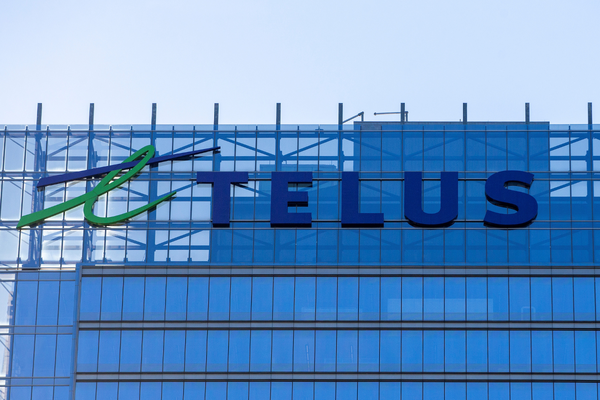Empowering business’s mid tier

Chris Paton at Quirk Solutions explains how to empower the mid-tier of your business – and why doing so is vital in these uncertain times
As crisis follows crisis, the past few years have presented businesses with a relentless series of challenges that have transformed the commercial environment.
Between the pandemic, remote working, global conflicts and the Great Resignation, leaders have been responsible for keeping their organisations afloat and motoring amidst a set of circumstances that have redefined the word ‘unprecedented’.
Against this backdrop, many businesses across the world are now beginning to recognise the importance of taking care of and placing focus on employees, in order to retain talent, boost productivity and unlock their organisations’ full potential.
For some reason though, one area of the business that is often overlooked is the mid-tier of the employee structure – the managers, team leads and supervisors.
It is not clear why the mid-tier seem to be taken for granted. Perhaps it’s simply that focusing on the executive or junior tiers is more straightforward. Regardless of the reason, this is a significant oversight, as on so many occasions we have found that the mid-tier hold the key to taking a business to the next level.
This is because the central layer of a business is composed of the people who make things happen – driving strategies forward and making sure plans are followed through. I like to think of these individuals as the gearbox of a business.
They are the ones with oversight of all the day-to-day activity of their teams, compared with senior leaders who have a greater focus on the mid to long term. They act as the link between the upper and lower levels of the organisation.
But without proper investment and care, this gearbox will stall.
Far too often we find that organisations have optimised their middle tiers for yesterday’s tomorrow. In order for them to be effective for today’s tomorrow, they need serious reinvestment. With the right level of support, training, development and time, these individuals can take greater ownership and responsibility, empowering them to act upon their detailed knowledge of the business to predict issues and come up with solutions in real-time.
This allows businesses to pivot quickly and effectively, maintaining productivity even in the most uncertain of times.
There are a range of steps that leaders can take to give their mid-tier teams the power to be brilliant – but the key principle is time. Time given by senior leaders to talk to mid-tier employees, coaching them, listening to their ideas, providing guidance and advice, and building trust. Time is also needed to allow these employees the opportunity to learn, grow, try things, and make mistakes.
A great technique to provide more empowerment to the mid-tier, without overwhelming them (or senior leaders feeling they’ve ceded control), is ‘freedom in a framework’. This is a set of delegated parameters, that allows a clearly defined space for decision-making to occur, without mid-tier leaders having to refer upwards. It is used by McDonalds and many other organisations, including the military, to maintain tempo and efficiency – ensuring decisions are made at the most effective level.
Another tactic that businesses can use to unlock the mid-tier’s full capabilities is to encourage their innate ability to act as the connective tissue between levels. Bringing in the input of team members all the way from the top tier to the frontline gives business planning a much-needed reality check, as those involved in the management and delivery of plans have a granular knowledge of what is needed, what won’t work and what clients are saying.
The mid-tier hold the keys to unlocking this greater diversity of thought, acting as a ‘hub’ that draws in all inputs, and can synthesise it into powerful solutions. Businesses are led by highly talented people, but they can be homogenous as a group and think in similar ways. Bringing a broader range of views and experiences to the table can be a great way to explore plans in ways that the senior team may not have even considered.
Early adopter businesses that have started to move to agile structures across all layers of the business are seeing great results. Involving the mid-tier more effectively helps create a culture where teams can make decisions and tackle challenges rapidly. Doing so provides those staff with a greater sense of engagement and happiness, minimising churn and improving their chances of success.
Enhancing the communication, connections and integration of people and teams at all levels is a challenging transition, but leaders overlook the mid-tier at their peril.
In the current business climate, it’s nearly impossible to predict what’s around the corner. Trusting and empowering the central layer of your organisation will provide you with the agility that you need to pivot and outmanoeuvre your competitors.
Chris Paton is Managing Director at Quirk Solutions. In his former career, he was a Lieutenant Colonel in the Royal Marines and advisor to the UK Cabinet and National Security Council on the Afghan strategy. Bi-lingual in French and with a Masters Degree in International Liaison and Communication, Chris is a Fellow of the Strategic Planning Society.
Main image courtesy of iStockPhoto.com

Business Reporter Team
Related Articles
Most Viewed
Winston House, 3rd Floor, Units 306-309, 2-4 Dollis Park, London, N3 1HF
23-29 Hendon Lane, London, N3 1RT
020 8349 4363
© 2025, Lyonsdown Limited. Business Reporter® is a registered trademark of Lyonsdown Ltd. VAT registration number: 830519543





